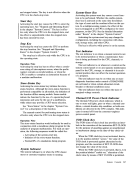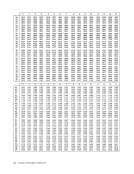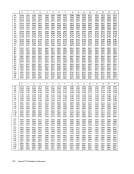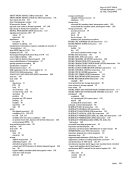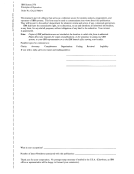1
The next CCW is fetched from the location in abso
lute main storage designated by the data-address
field of the CCW specifying transfer in channel. The
transfer-in-channel command does not initiate any
not signaled of the execution of the command. The
purpose of the transfer-in-channel command is to
provide chaining between CCWs not located in adja
cent doubleword locations in an ascending order of
addresses. The command can occur in both data and
command chaining.
The first CCW designated by the CAW may not
specify transfer in channel. When this restriction is
violated, no
program-check condition is generated. The error
causes the status portion of the
program-check indication to be stored during the
execution of START
ST ART
pendently of the device, the error causes an
To address a CCW on integral boundaries for
doublewords, a CCW specifying transfer in channel
must contain zeros in bit positions 29-31. Further
more, a CCW specifying a transfer in channel may
not be fetched from a location designated by an
immediately preceding transfer in channel. When
either of these errors is detected or when an invalid
address is specified in transfer in channel, the
program-check condition is generated. When the
transfer-in-channel command designates a CCW in a
location protected against fetching, the protection
check condition is generated. Detection of these
errors during data chaining causes the operation at
the
condition to be generated, whereas during command
chaining it causes only an interruption condition to
be generated.
The contents of the second half of the CCW, bit
positions 32-63, are ignored. Similarly, the contents
of bit positions
Command Retry
mand retry, a channel and control-unit procedure
that causes a command to be retried without requir
ing an
control unit presenting either of two status-bit com
binations by means of a special
quence. When immediate retry can be performed, it
presents a channel-end, unit-check, and status
modifier status bit combination, together with device
end. When immediate retry cannot be performed,
the presentation of device end is delayed until the
control unit is prepared. When the channel is not
capable of performing command retry, or when any
status bit other than device end accompanies the
requested command retry initiation, the retry is sup
pressed, and an interruption condition is generated.
The
and status-modifier status indications, along with
any other appropriate status.
During command retry, the channel action is simi
lar to that taken when command chaining. Thus,
when command retry is performed, a START
mand chaining is not indicated in the CCW causes a
condition code
set. The subsequent termination of the command
execution causes an interruption condition to be
created.
Programming Notes
The following possible results of a command retry
must be anticipated by the program:
1. A CCW containing a
cause of command retry, cause multiple
2. A channel program consisting of a single, un
chained CCW specifying an immediate com
mand may cause a condition code
1 to be set. This setting of the condition code
occurs if the control unit signals command re
try at the time initial status is presented to the
command. The channel program then causes a
later interruption upon completion of the oper
ation.
3. If a CCW used in an operation is changed be
fore that operation has been successfully com
pleted, the results are unpredictable.
4. A
prior to the presentation of device end, as
when a
address of the command to be retried + 8.
5. If a HALT
of a retry but prior to the presentation of de-
Input/Output Operations 221
























































































































































































































































